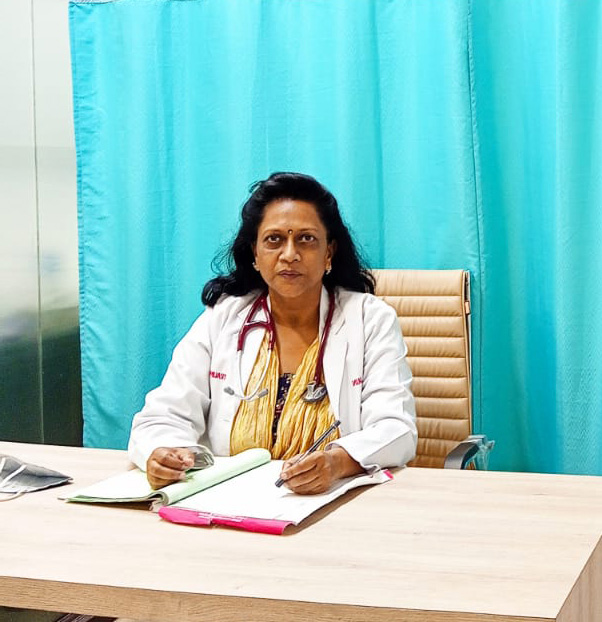Prevention is often preferred over treatment when it comes to health concerns, and pilonidal cysts are no exception. These cysts, typically located at the top of the buttocks crease, are sacs filled with air or fluid, containing hair and debris. They can cause discomfort and recurrent infections. Therefore, many individuals seek ways to avoid developing this painful skin condition.
Delhi’s leading laparoscopic surgeon for pilonidal cysts, Dr Amita Jain shares a few ways by which Pilonidal Cysts can be avoided.
What are the ways to avoid pilonidal cysts?
General and Laparoscopic surgeon Dr Amita Jain says you need to take care of the following things:
Removal of Hair – In order to avoid pilonidal cysts, consider removing excess hair from the affected area. This can help prevent loose hairs from becoming trapped in the cyst and potentially causing infection. Your doctor may suggest specific hair removal methods, but common options include shaving or using depilatory creams. Regular hair removal in the affected area can reduce the risk of hair follicles becoming irritated. However, avoid tweezing or plucking hairs, as this can cause discomfort and increase the likelihood of cyst formation.
Say No to Prolonged Sitting – To mitigate the risk of developing pilonidal cysts, it is advisable to incorporate regular breaks and movement into your routine if your job or daily activities involve prolonged periods of sitting. Whether you’re a teacher or office worker, taking frequent breaks to stand and move around helps reduce the constant pressure and friction around the tailbone. This proactive approach minimizes the likelihood of cyst formation and alleviates excessive strain on the coccyx region.
Good Hygiene is a must – A pilonidal cyst, also known as a pilonidal sinus, develops when an unnatural channel forms in the skin at the top of the buttocks. This can lead to the accumulation of dirt, dead cells, oil, and bacteria, potentially causing an infection. To prevent this, regular hygiene practices are crucial. Washing daily with soap and water, and possibly exfoliating the skin as recommended by a doctor, helps keep the area clean and free of debris.
Avoiding oils or herbal products and using glycerin soap for cleaning is essential. Additionally, thorough drying of the skin after washing is important to prevent bacterial growth. Gentle scrubbing during cleansing helps remove dead skin cells, reducing the risk of them entering the pilonidal sinus. After activities that induce sweating, such as exercise or hot weather, prompt showering, drying off, and changing into clean clothes are recommended to minimize the risk of infection.
Weight Management – While the real mechanism behind pilonidal cyst formation remains uncertain, it appears to be associated with hair, potentially when a stray hair penetrates the skin or irritates the hair follicle. Excess weight can increase the risk by exerting additional pressure on the tailbone area, exacerbating inflammation or allowing hair to become embedded. Regular physical activity is crucial for prevention, though biking is not advisable as bike seats exert pressure at points that you want to avoid.
Maintaining a healthy weight and staying active can reduce the likelihood of pilonidal cysts by minimizing pressure and irritation in the affected area. Keeping the region free from prolonged pressure or friction helps prevent debris from entering the pilonidal sinus and causing infection. Incorporating more movement, even during sedentary periods, and losing weight can alleviate pressure and contribute to overall prevention efforts.
Choose Loose Comfortable Clothing – Avoid tight clothing, such as compression shorts, yoga leggings, shapewear, thong underwear, and snug jeans, as they can chafe your skin and put pressure on your tailbone area, potentially leading to pilonidal cysts.
Choose loose garments that don’t constrict your hips and buttocks. Alongside maintaining cleanliness, exercising, managing weight, removing excess hair, and choosing clothing wisely are essential steps to protect against pilonidal disease.
These are the few practical steps recommended by Dr Amita Jain to avoid pilonidal cysts: regular hair removal, avoiding prolonged sitting, maintaining good hygiene, managing weight, and opting for loose clothing. Following these strategies can significantly reduce the risk of developing this uncomfortable condition.

Dr Amita Jain is a surgeon with the highest degree of professional competence, precision and surgical craftsmanship. Performed all complicated general surgery procedures with in depth knowledge of invasive and few minimal invasive and onco surgical techniques. Underwent special training in trauma, executed various trauma-related complex life-saving neurosurgical procedures, reconstructed injured mangled limbs and performed vascular and reconstructive procedures with critical care.
Dr Amita Jain holds 28 plus years of rich experience in Trauma and General Laparoscopic Surgeries (including Gallbladder stone removal, appendix removal, hernia repair surgery, piles and fissure surgeries). She was the Professor Surgery of at the Army College of Medical Sciences and Base Hospital Delhi Cantt. In 1994 she was commissioned as Surgeon under the United Nations Mission in Congo. From 2020 to 2022, she worked with Bansals Hospital. Currently, Dr Amita Jain is the Senior Consultant, (Speciality: General and Laparoscopic Surgeon) at Artemis Lite Hospital, New Delhi and Sr. General and Laparoscopic Surgeon at Rainbow Children Hospitals, Malviya Nagar, Delhi.
